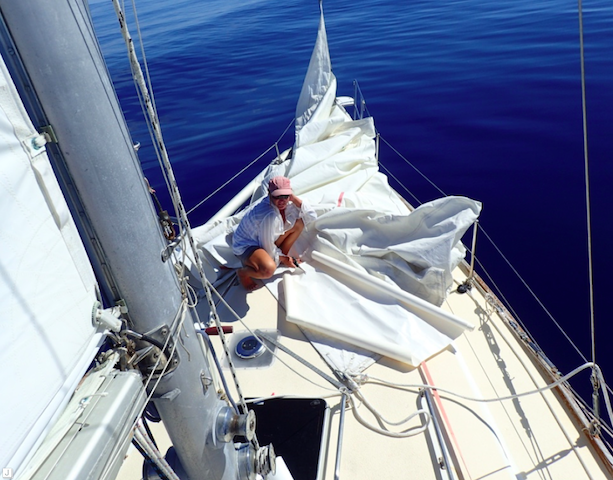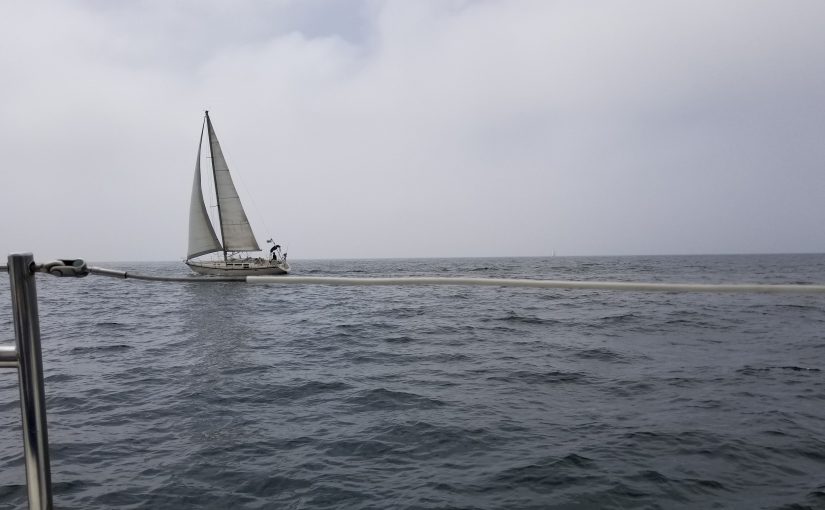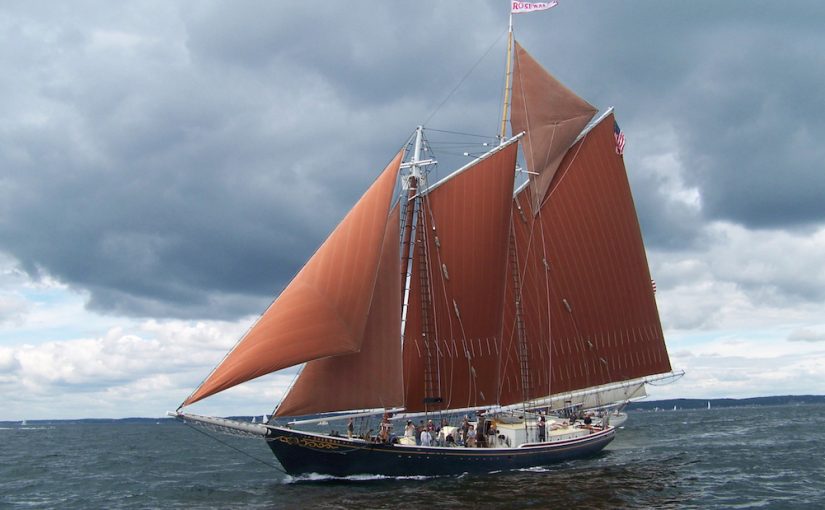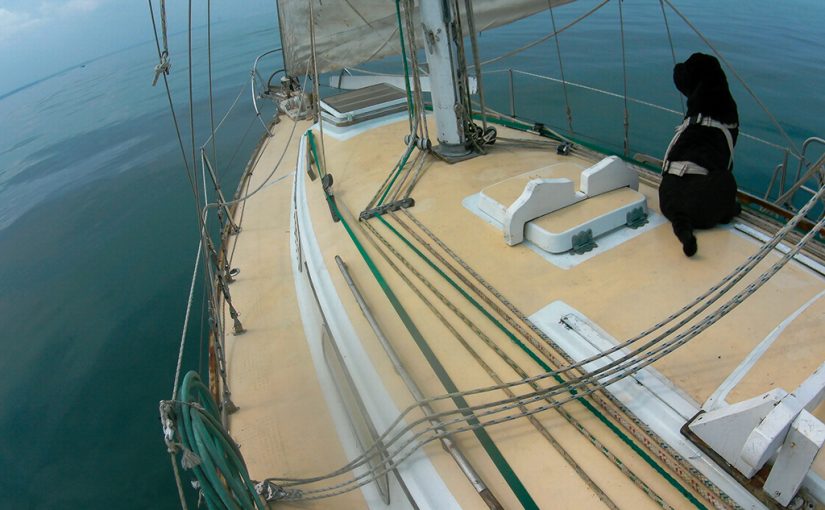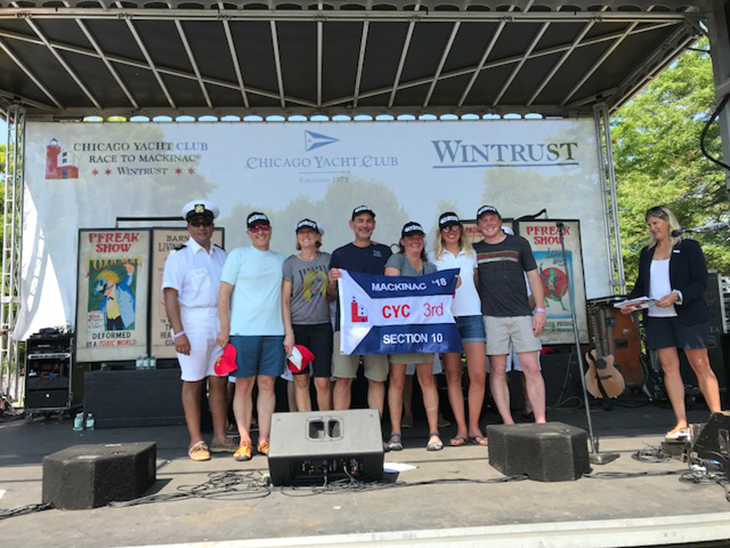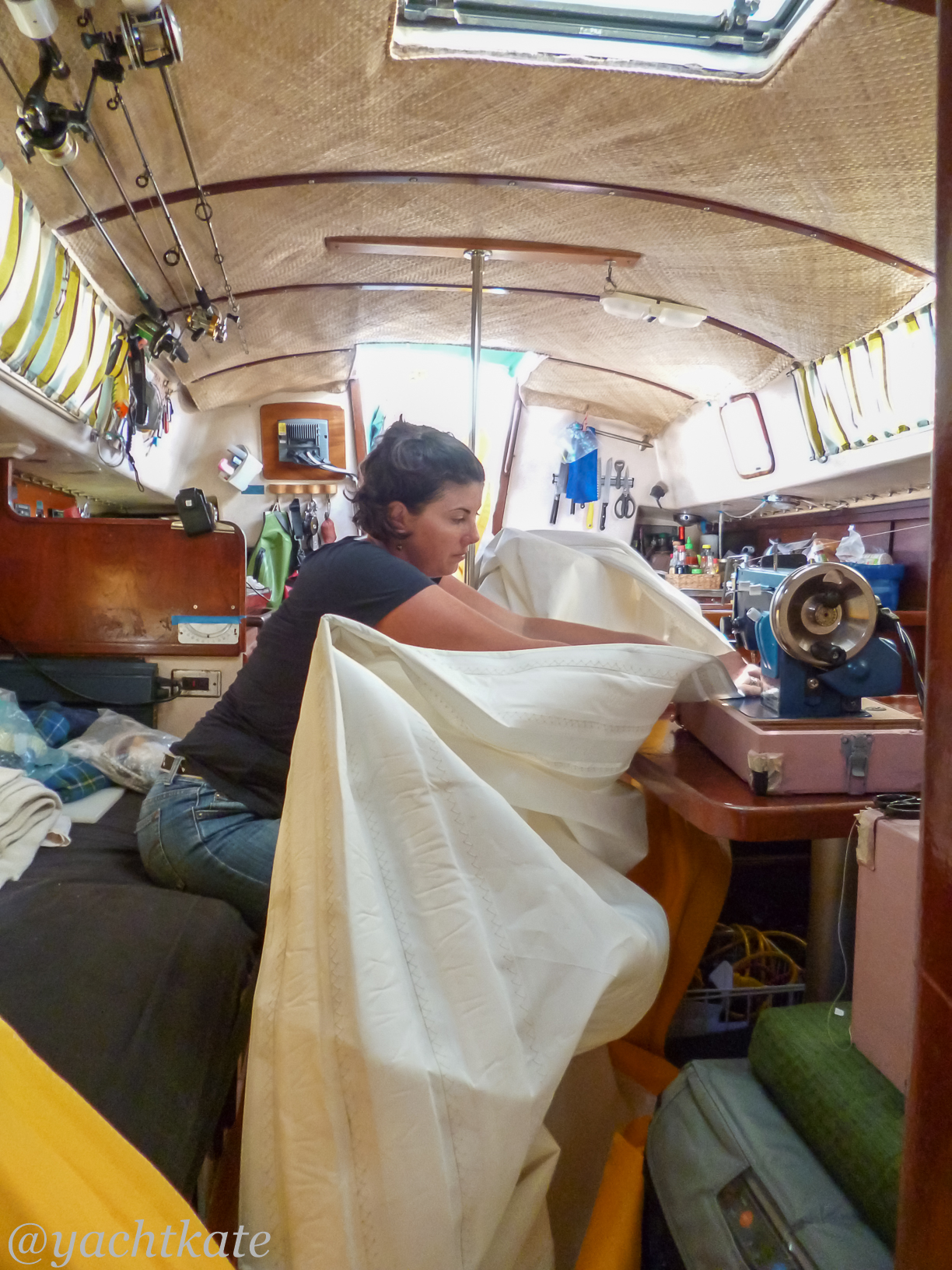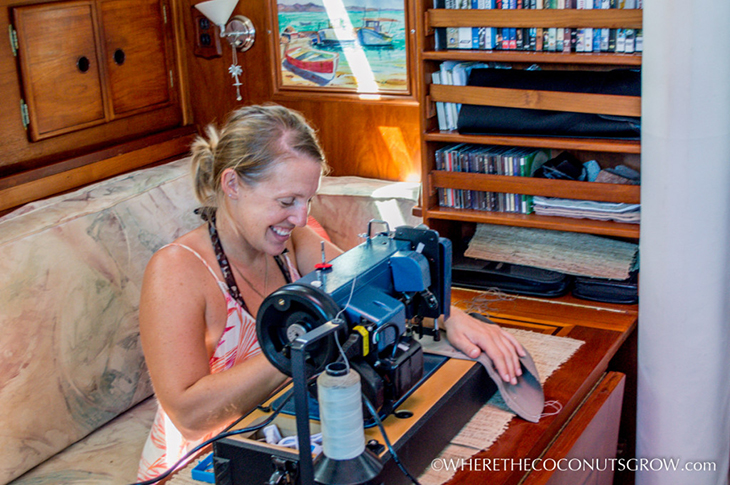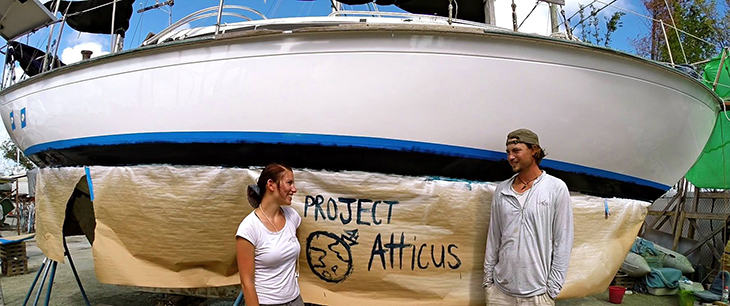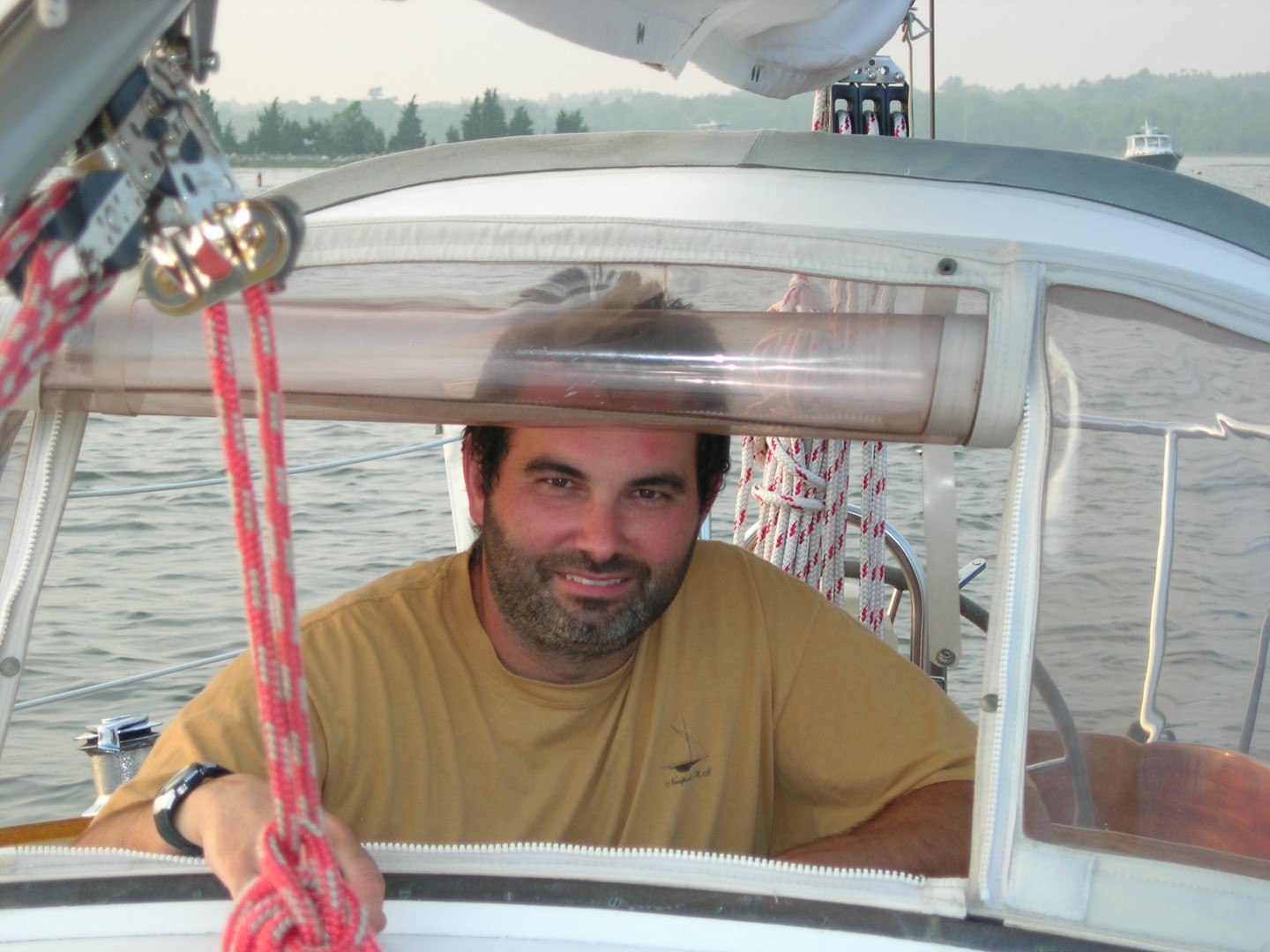Amanda Witherell’s story is one of adventure, perseverance, serendipity and the kindness of strangers. She met her husband, Brian Twitchell, in San Francisco where they were both working. Brian, a union electrician, spent half the year working and the other half sailing his 1974 Morgan Out Island 41 Clara Katherine up and down the Pacific Coast from California to Mexico. When the financial crisis hit in 2008 and Brian was laid off, he convinced Amanda to quit her job as a reporter and cruise the South Pacific with him until the economy recovered. Having learned to sail when she lived in Maine, she had worked for a few years as a sailmaker and would be able to contribute with sail repair and maintenance on board.
Inspired by Brian’s enthusiasm and her own wanderlust, she agreed. “I quit, gave away all my stuff, packed a bag and bought a one-way plane ticket to Puerto Vallarta. We sailed around Mexico for a few months and decided to keep going south until we ran out of money. We cruised the west coasts of El Salvador, Nicaragua and Costa Rica.”

In Costa Rica, they met a couple on their third circumnavigation who’d made a life of sailing the world. The friendly couple urged Amanda and Brian to sail the South Pacific, but they were short on money and didn’t know how to sustain their new sailing lifestyle. When the other couple learned that Brian was an electrician and Amanda could sew sails and canvas, they insisted that they go. “‘Just go!’ they urged us,” Amanda recalled. “‘You’ll make money along the way.’”
They were right. “I could have opened a full-service sail loft in Panama City with the amount of work that’s generated by the thousands of boats passing through,” Amanda stated. The couple sailed from port to port while Amanda made money along the way repairing sails and taking on other sewing jobs.
When she was in her 20s, she talked her way into a job at a sail loft in Brooklin, Maine, where she learned how to build a sail from start to finish. Being that it was a small business in a rural community, the sail loft still did things the old-fashioned way. “We literally lofted sails on the wooden floor, using pins and string, rolling out cloth, and hand stitching the hardware that would connect the sail to the rig.” Those skills served her well in her new life, as she had limited resources and even more limited technology on those remote South Pacific islands. “I fixed sails in the Marquesas, spinnakers in Tahiti, built canvas enclosures in Tonga and dinghy chaps in New Zealand.”
Acquiring an Ultrafeed
In Bora Bora, they met a solo sailor who needed to fix his sail and was having a bit of trouble with his sewing machine. Learning that Brian was handy, the sailor asked him to take a look at his Sailrite® machine. Not knowing how to adjust the timing on a sewing machine, Brian couldn’t help. Amanda repaired his sail using their own sewing machine and the three parted ways.
A few months later, they ran into him again, this time in Whangarei, New Zealand — which goes to show how small the sailing community can be — and fate intervened. They’d arrived just in time to rescue his Ultrafeed® LSZ from imminent doom. Fed up with the machine, the salty sailor was just about to chuck it into the harbor. He asked Amanda and Brian if they wanted the sewing machine, and they eagerly saved it from a saltwater funeral. It wasn’t in the best condition, however. The sailor had stored it in his cockpit locker and the sewing machine had been routinely doused with saltwater.

“The case was covered in mold and all the metal parts were showing rust,” Amanda explained. “I cleaned off the mold, wiped clean all the metal and oiled everything, then packed it away because I didn’t have time to deal with it at the moment. We’d just been approved for work visas and decided to stay in New Zealand, so we were transitioning from cruising full time to working full time. We sailed the boat down to Wellington and got jobs that had nothing to do with sewing or sailing.”
The couple didn’t know much about the Ultrafeed or repairing sewing machines in general, so they took it to a repair shop in New Zealand. “One hundred New Zealand dollars later it was running fine and has continued to run perfectly ever since.”
They already owned an old Italian Necci home sewing machine, but it couldn’t always sew through some of Amanda’s thicker fabric assemblies, such as canvas and genoa sunshields. The Ultrafeed never hesitated to power through anything Amanda was working on. They still have their Necci, but Amanda now uses their secondhand Ultrafeed for all projects and repairs.
“Because it was given to us, I consider it ‘the people’s machine’,” said Amanda, “and I keep it overstocked with needles of all sizes and lend it to any cruiser in need. It’s been ashore in countless countries as we worked our way across the South Pacific from New Zealand back to the U.S. I’ve rebuilt our dodger twice, our bimini three times, made a new sail cover, sewed on a new genoa sunshield, stitched new salon cushions, built a foredeck sun awning/rain catcher, repaired our mainsail, and on and on.”

Homeward Bound
In 2015, after years of sun, surf and sailing, they decided they were done with New Zealand and made preparations to cruise back to the U.S. “We picked the ping pong route,” Amanda explained, “bouncing between South Pacific islands against the trade winds and revisiting many of the islands we saw on our first pass through.” They also decided to sail up to Micronesia and visit places they skipped the first time. “It took two and a half years, and we put about 12,000 miles under our keel, almost all of them hard on the wind in a boat that was not designed to go to windward efficiently.”
All that cruising was hard on the sails, and by the time they got to Tahiti their genoa was on its last legs. “It was over 10 years old and had sailed something well north of 25,000 miles. I’d already replaced the sunshield twice and, running my hands along the tired cloth, I could feel that it was sun rotten and approaching the point of no return in terms of repair. But we only had 2,000 more miles to go to Hawaii, and then another couple thousand to California. We were practically home! I made some repairs in Tahiti and we set off for Fanning Island, Kiribati. Along the way, it tore just inboard of the sunshield — a sure sign of sun rot.”
They stayed on Fanning Island for two months enjoying the remoteness of the island and the friendliness of its inhabitants. While Amanda worked on repairing the genoa sail one last time, the locals kept the couple fed and hydrated with fresh fish and coconuts. “The key to a good sail repair is being able to stretch the cloth and pin it out as flatly as possible,” Amanda noted. “For a 150 genoa from a 41-foot boat, I needed more space than we had on the boat, plus a porous floor to pin into.”

The couple befriended a French expat who ran the only guesthouse on the island. He offered one of his sleeping huts, which provided enough flat space for Amanda to pin out and sew an enormous window patch repair across every seam of the genoa from head to foot. “I used up every bit of sailcloth I had squirreled away on the boat, and then I reinforced the inboard section with sticky Dacron®, but I knew we were running out of time with this sail and hoped it would just stay together long enough to get us to Hawaii.”
With just over 1,000 miles from Fanning Island to Hawaii did the sail hold? “It almost did. The next tear occurred by the luff, just outside the head patch — a sure sign of sun rot. Game over. We made it to Hawaii using our two spare, elderly, hank-on sails run on our Solent stay. On a grassy lawn in Waikiki, we spread out our genoa, took some measurements, cut off every useful bit of hardware, then put the old thing to rest in a dumpster. My next project will be to build a new one.”
Who We Are
Sailrite is your one-stop DIY shop! We are a passionate crew of do-it-yourselfers who strive to equip you with the supplies and how-to knowledge you need to tackle your next project. Do you want to learn upholstery, leatherwork, canvaswork, hobby sewing, bag making or more? We have the fabric, tools, hardware, sewing machines and notions you need to master any DIY. And even if you’ve never sewn before, our tutorials and how-to videos are designed for beginners and experienced crafters alike.
Start your DIY journey today: www.sailrite.com

